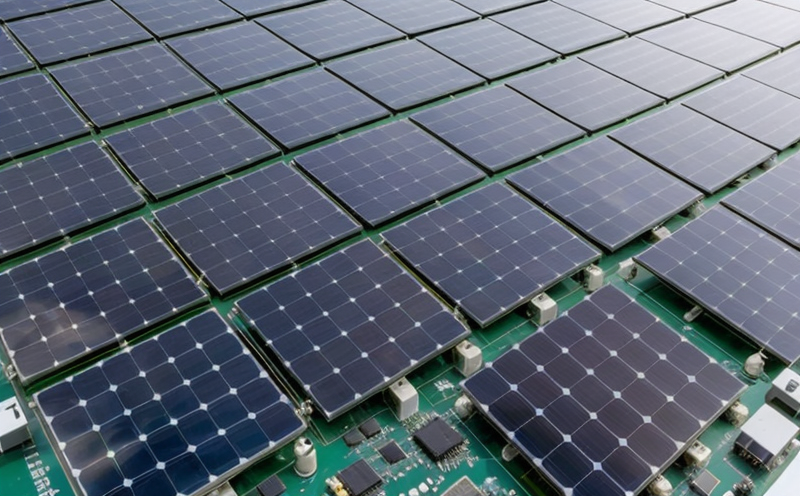IEEE 929 PV System Utility Interface Testing
The IEEE Standard 929-2017 provides a framework for testing photovoltaic (PV) systems to ensure they interface safely and efficiently with utility grids. This service ensures compliance with international standards, which is critical in renewable energy applications.
Our state-of-the-art laboratory facilities are equipped with the latest instrumentation capable of accurately measuring voltage, current, frequency, and power factor. We follow a rigorous process to ensure that each test meets the stringent requirements set forth by IEEE 929-2017. This includes thorough preparation of the PV system for testing, calibration of all instruments used, and detailed data logging throughout the process.
The testing procedure typically begins with an initial inspection of the PV system to ensure it is properly configured according to IEEE standards. Once this is confirmed, we proceed with a series of tests designed to evaluate the safety, stability, and performance characteristics of the PV system when interfacing with the utility grid.
During the testing phase, our team monitors key parameters such as short-circuit current, open-circuit voltage, maximum power point tracking (MPPT), and reactive power compensation. These measurements are critical for determining whether the PV system complies with IEEE 929-2017 standards.
After completing all necessary tests, our experts analyze the collected data to ensure that the PV system meets or exceeds the specified performance criteria. If any discrepancies are found, we work closely with clients to identify potential issues and provide recommendations for corrective actions.
The final step in the testing process involves generating a comprehensive report detailing all test results and observations. This document serves as proof of compliance with IEEE 929-2017 standards and can be used by clients for internal documentation or submission to regulatory bodies.
Scope and Methodology
| Test Parameter | Description |
|---|---|
| Short-Circuit Current (Isc) | Determination of the maximum current that a PV module can deliver when short-circuited. |
| Open-Circuit Voltage (Voc) | Measurement of the voltage across the terminals of a PV cell or module with no load connected. |
| Maximum Power Point Tracking (MPPT) | Evaluation of the system's ability to maintain optimal operating conditions under varying environmental conditions. |
Our methodology adheres strictly to IEEE 929-2017 guidelines. We employ advanced measurement techniques and sophisticated instrumentation to ensure accurate results. Each test is conducted in controlled laboratory environments that simulate real-world operating conditions, allowing for precise evaluation of the PV system's performance.
Environmental and Sustainability Contributions
The renewable energy sector plays a crucial role in reducing greenhouse gas emissions and mitigating climate change. By ensuring that PV systems comply with IEEE 929-2017 standards, we contribute to the development of safe and efficient solar power generation technologies.
Our services support the transition towards cleaner energy sources by promoting the deployment of reliable and high-performance PV systems. Compliance with these standards helps reduce risks associated with improper integration of renewable energy into existing utility grids, thereby fostering a more sustainable future.
Use Cases and Application Examples
- Utility-scale solar farms seeking certification for grid interconnection.
- R&D projects focused on improving the efficiency of PV systems.
- Manufacturers developing new PV technologies aimed at meeting stringent regulatory requirements.
| Application | Description |
|---|---|
| Utility-scale solar farms seeking certification for grid interconnection. | Ensuring compliance with IEEE 929-2017 helps utility-scale solar farms meet regulatory requirements and gain approval from relevant authorities. |
| R&D projects focused on improving the efficiency of PV systems. | Testing according to IEEE 929-2017 provides valuable insights into how well a new technology performs in real-world scenarios, aiding continuous improvement efforts. |
| Manufacturers developing new PV technologies aimed at meeting stringent regulatory requirements. | Compliance with IEEE 929-2017 ensures that manufacturers can confidently introduce their products into markets where these standards are enforced, reducing the risk of non-compliance issues. |





